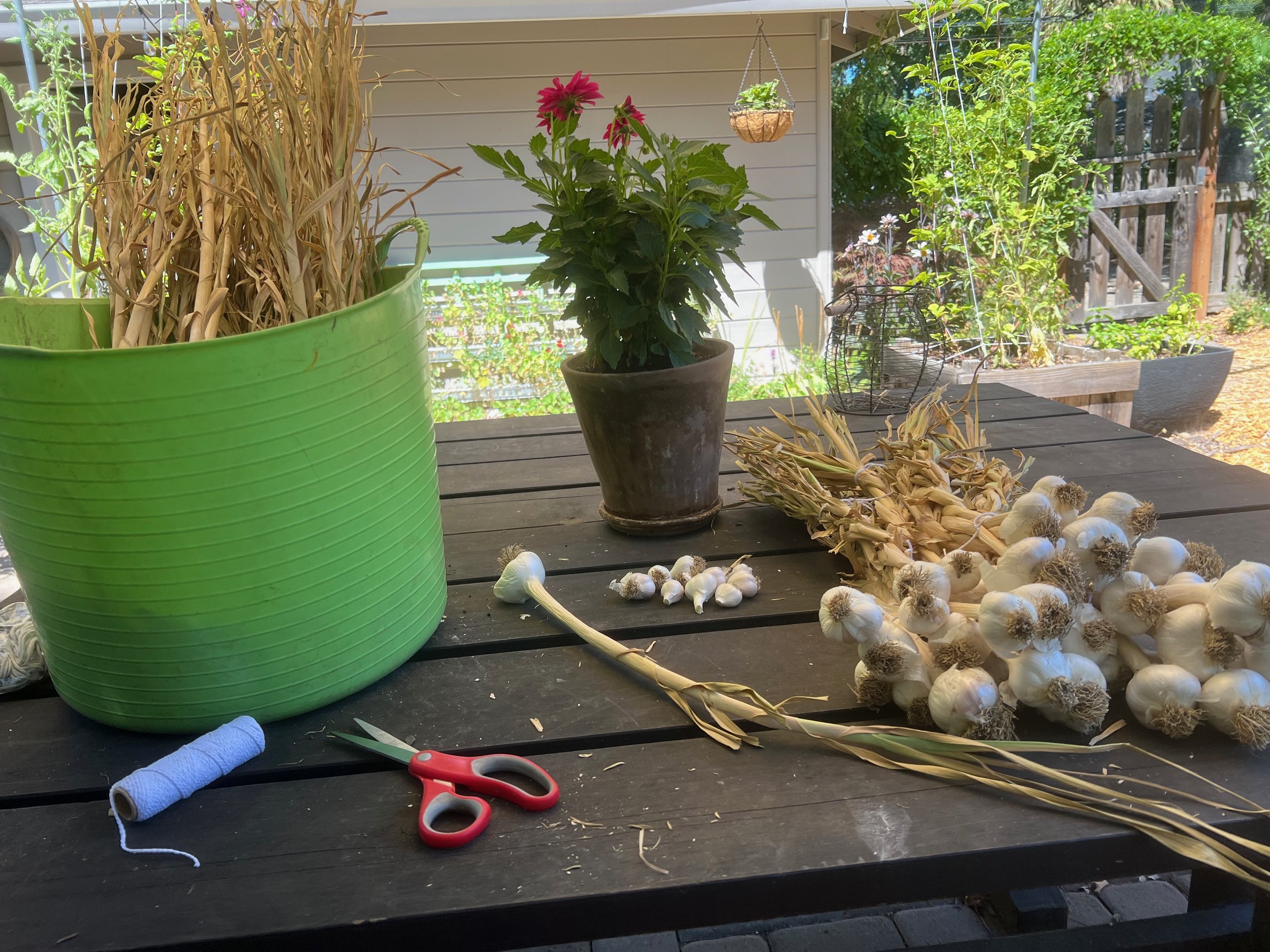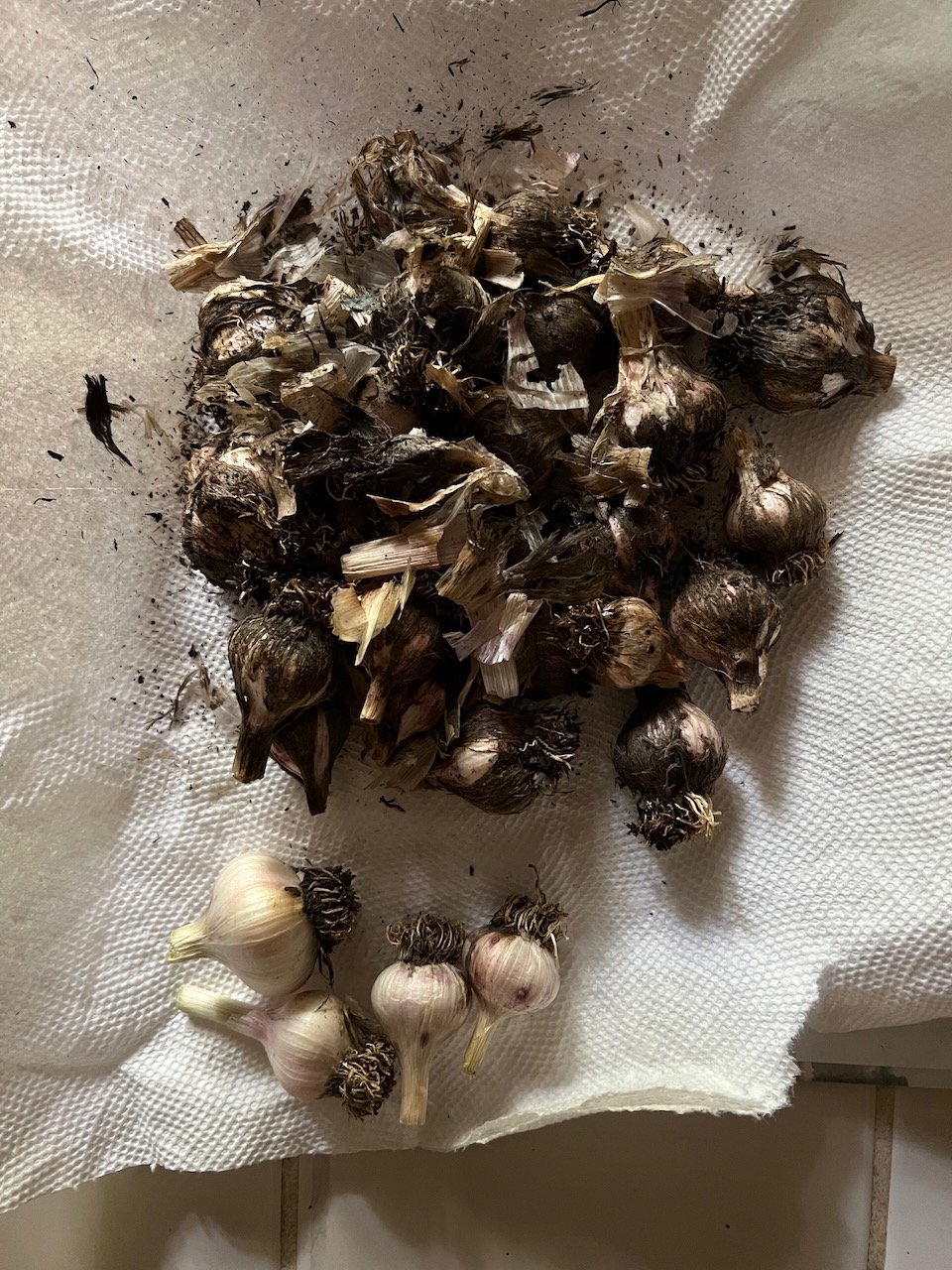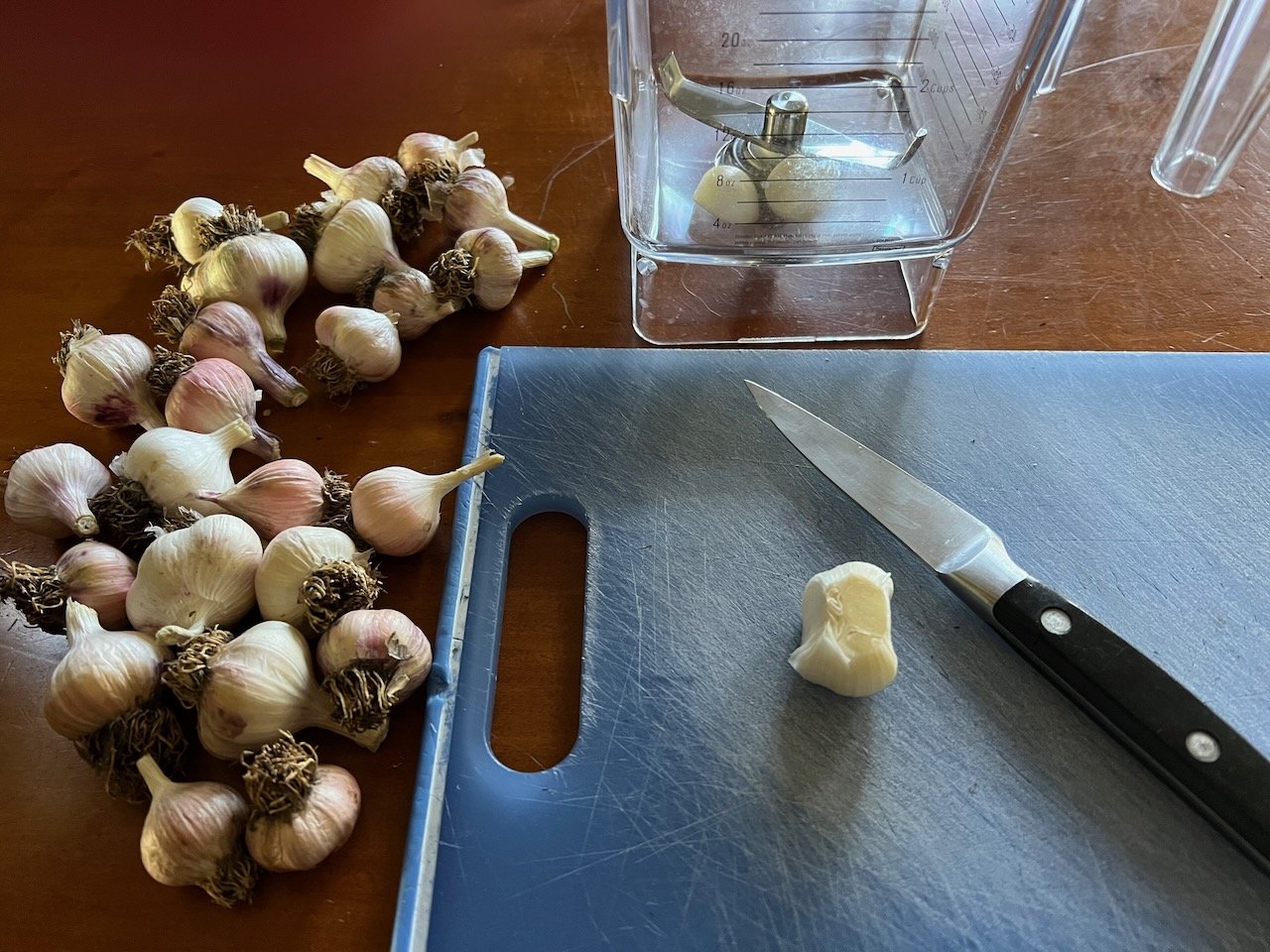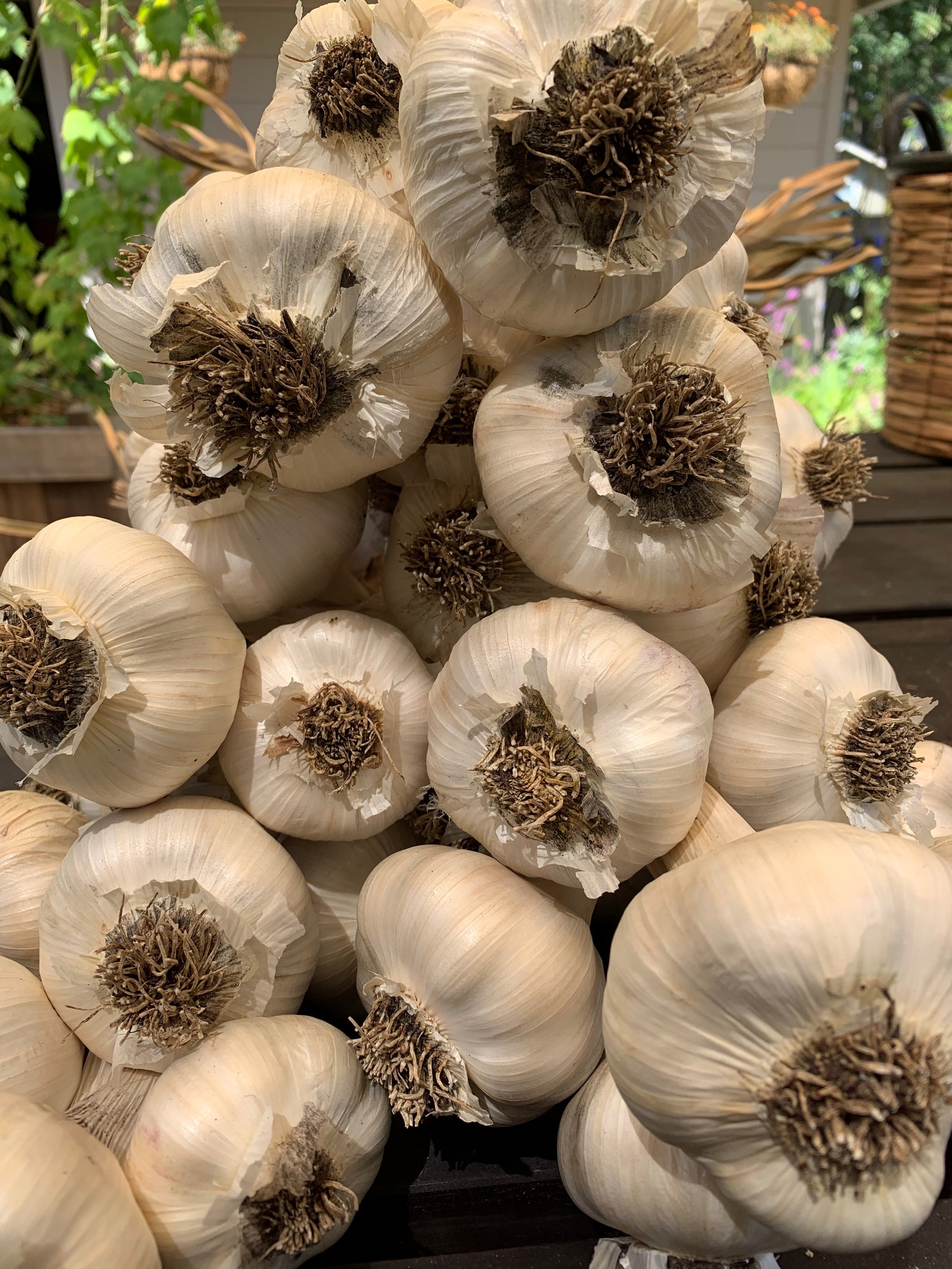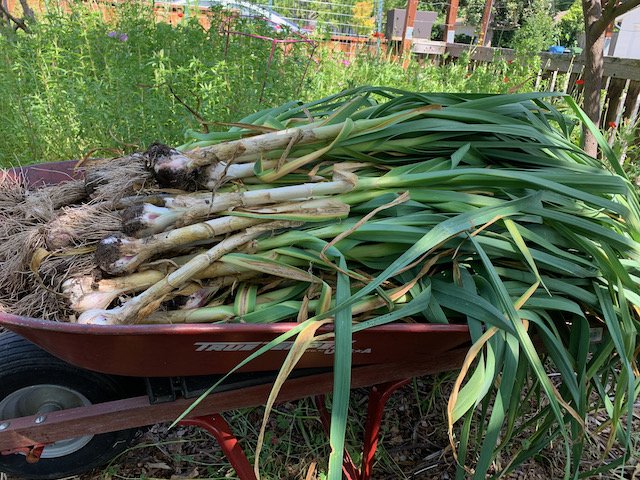To order your garlic (for fall planting) NOW!
Because I was late ordering last year (I ordered in summer rather than spring), I ended up getting a variety of garlic that I’d never planted before, and as you can see from the above picture, the bulbs ended up being quite a bit smaller than the type I prefer (which is Inchelium Red). It’s ok, the garlic will be fine, and home-grown garlic of any kind beats the pants off of anything you can buy in the store. But still, I wish I had my old faithful hanging on the ceiling racks.
So - don’t be like my 2023 self - be like my 2024 self and make sure you order now! I actually order it in March for delivery in October. My favorite place from which to order seed garlic is Filaree Farm in Oregon. They have so many different varieties. I like the softnecks so I can braid them for hanging, but if you like garlic scapes, you’ll want to order hardnecks.
Anyway, our garlic harvest was late this year, in early June rather than late May, and then the stalks hung on the garage racks for a month in order to thoroughly dry out. This past weekend, I braided them for hanging in the house. It’s a fun task.
Then I cut up all of the old cloves left from last year, all of which were bolting. I cut out the green shoot, put them in the food processor and made a paste, then spread it on a sheet and put it in the dehydrator. After drying, I whizzed it in our dedicated spice grinder (an old coffee grinder) and voila, we’ve got our garlic powder supply for the next year.
The smell of the house on ‘garlic’ day is really something. It feels good to provide ourselves with this necessary kitchen ingredient each year. Garlic is a beautiful and easy crop to grow, it’s used in practically everything we cook, growing it ourselves saves us money and time, and it looks great hanging up in the house.
